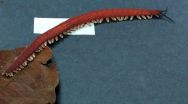Healthy diet reduces risk of cardiovascular disease by a third in over-40s
2015-03-18
(Press-News.org) Men and women who adapt their daily diet to meet current UK dietary guidelines could reduce their risk of a heart attack or a stroke by up to a third, according to a new study by King's College London.
The study, published in the American Journal of Clinical Nutrition, recruited healthy middle-aged and older men and women to compare the effects on risk factors for cardiovascular disease (CVD) of following a diet based on UK health guidelines compared with a traditional British diet. The predicted risk of CVD over the next 10 years for the participants was estimated to be about 8% in the men and 4% in the women.
In the randomized controlled trial, researchers measured the blood pressure, vascular function and CVD risk factors (such as cholesterol) in 162 healthy non-smoking men and women (aged 40-70 years) who followed a traditional British diet (control group) or an adapted one over a twelve-week period. Those on the modified diet ate oily fish once a week, more fruit and vegetables, replaced refined with wholegrain cereals, swapped high-fat dairy products and meats for low-fat alternatives, and restricted their intake of added sugar and salt. Participants were asked to replace cakes and cookies with fruit and nuts and were also supplied with cooking oils and spreads high in monounsaturated fat.
Adherence to the dietary advice was confirmed both with dietary records and by measuring specific biomarkers in the participants' blood and urine. The latter indicated an increase in potassium and fibre intake in the dietary group along with a drop in sodium (salt) and saturated fat and added sugar intake. However, total sugar intake remained unchanged owing to the increase in sugar intake from fruit.
The average body weight in the group who followed the modified diet fell by 1.3 kg whilst that in the control group rose by 0.6 kg after 12 weeks, resulting in an overall difference in weight of 1.9 kg between the two groups; the equivalent difference in Body Mass Index (BMI) was 0.7 between the groups. Waist circumference was 1.7 cm lower in the dietary group compared to the control group.
Significant falls in systolic blood pressure/diastolic blood pressure of 4.2/2.5 mm Hg for daytime and 2.9/1.9 mm Hg for night time were measured in the dietary group compared with the control group; the average heart rate was found to have lowered by 1.8 beats per minute.
Levels of cholesterol also fell by 8%, although changes in the ratio of total cholesterol to high-density cholesterol were modest compared with the effects of drugs such as statins. No significant change was recorded in markers for insulin sensitivity, which predicts the risk of developing type 2 diabetes.
Overall, the study concluded that healthy men and women aged 40 and over who adapt their daily diet to meet current UK dietary guidelines reduce their risk of heart disease by up to a third.
Emeritus Professor Tom Sanders, co-author from the Division of Diabetes & Nutritional Sciences at King's College London, said: 'Our findings apply to middle-aged and older people without existing health problems. This is important because most heart attacks and strokes occur in those not identified as being at high risk. We show that adherence to current dietary guidelines which advocate a change in dietary pattern from the traditional British diet (high in saturated fat, salt and sugar, low in fibre, oily fish and fruit and vegetables) would substantially lower that risk.'
Dr Alison Tedstone, Chief Nutritionist at Public Health England, said: 'PHE has always recommended a balanced diet that is low in saturated fat, salt and sugar and includes oily fish and five portions of fruit and vegetables a day as part of a healthy lifestyle that includes keeping active and not smoking. This study clearly illustrates that following this advice will protect your health by significantly reducing your risk of heart disease.'
INFORMATION:
ELSE PRESS RELEASES FROM THIS DATE:
2015-03-18
In diseases such as asthma and chronic obstructive pulmonary disease (COPD), the body produces too much mucus, making breathing difficult. New research from Washington University School of Medicine in St. Louis provides clues to potentially counteract inappropriate mucus production.
"The new study lays the groundwork for developing treatments for diseases such as asthma, COPD, cystic fibrosis and even certain cancers," said senior author Thomas J. Brett, PhD, assistant professor of medicine. "It also solves a 20-year mystery about the role of a protein that has long been ...
2015-03-18
Researchers at the San Diego Supercomputer Center (SDSC) and the Moores Cancer Center at the University of California, San Diego, have described for the first time the molecular mechanism of cancer development caused by well-known "resistance" mutations in the gene called epidermal growth factor receptor (EGFR).
While these mutations were known for quite a long time, the question as to why they cause cancer or make some drugs ineffective was still not answered.
The study, called "Molecular Determinants of Drug-Specific Sensitivity for Epidermal Growth Factor Receptor ...
2015-03-18
Tropical Cyclone Bavi weakened to a depression and NASA's RapidScat instrument measured its waning winds from space.
On March 17 the RapidScat instrument aboard the International Space Station (ISS) measured Bavi's surface winds from 01:28 to 3:01 UTC. RapidScat data showed surface winds were strongest winds in the northwestern quadrant. Sustained winds were near 17 m/s (38 mph/61 kph) and weaker around the rest of the storm.
On March 18 at 0000 UTC (March 17 at 8 p.m. EDT), the Joint Typhoon Warning Center noted that Bavi's maximum sustained winds dropped to 25 knots ...
2015-03-18
Cambridge, Mass. - March 17, 2015 - The velvet worm is a slow-moving, unassuming creature. With its soft body, probing antennae, and stubby legs, it looks like a slug on stilts as it creeps along damp logs in tropical climates.
But it has a secret weapon. In the dark of night, when an unsuspecting cricket or termite crosses its path, the worm unleashes an instantaneous torrent of slime. Two fine jets of the gluey substance spray out of openings on its head, oscillating in all directions to cast a sticky net that entraps prey and stops it in its tracks.
Captivated, ...
2015-03-18
While unconscious race and social class biases were present in most trauma and acute-care clinicians surveyed about patient care management in a series of clinical vignettes, those biases were not associated with clinical decisions, according to a report published online by JAMA Surgery.
Disparities in the quality of care received by minority patients have been reported for decades across multiple conditions, types of care and institutions, according to the study background. Adil H. Haider, M.D., M.P.H., of Brigham and Women's Hospital, Boston, conducted a web-based survey ...
2015-03-18
ANN ARBOR, Mich. - Drugs aimed at quelling the behavior problems of dementia patients may also hasten their deaths more than previously realized, a new study finds.
The research adds more troubling evidence to the case against antipsychotic drugs as a treatment for the delusions, hallucinations, agitation and aggression that many people with Alzheimer's disease and other dementias experience.
In the new issue of the journal JAMA Psychiatry, researchers report findings from nearly 91,000 American veterans over the age of 65 with dementia.
Data from each patient who ...
2015-03-18
TORONTO (March 18, 2015) - People with a severe form of schizophrenia have major differences in their brain networks compared to others with schizophrenia, bipolar disorder and healthy individuals, a new study from the Centre for Addiction and Mental Health (CAMH) shows.
The study, which used a novel approach to map brain networks, was led by researchers at the Campbell Family Mental Health Research Institute at CAMH and published in this week's JAMA Psychiatry.
"Finding ways to help this particular group of people with schizophrenia is a priority as recovery is ...
2015-03-18
COLLEGE STATION - A ground-breaking Texas A&M AgriLife Research-led study on corn has identified useful gene variations for yield increases, drought tolerance and aflatoxin resistance that could make a real difference to Texas producers in the years to come, according to researchers.
The study, titled "Genome Wide Association Study for Drought, Aflatoxin Resistance, and Important Agronomic Traits of Maize Hybrids in the Sub-Tropics" was recently published in PLOS ONE, an international, peer-reviewed, open-access, online publication.
The study included the growing years ...
2015-03-18
From computers, tablets, and smartphones to cars, homes, and public transportation, our world is more digitally connected every day. The technology required to support the exchange of massive quantities of data is critical. That's why scientists and engineers are intent on developing faster computing units capable of supporting much larger amounts of data transfer and data processing.
A new study published in Nature Photonics by Tel Aviv University researchers finds that new optical materials could serve as the nuts and bolts of future ultra-high-speed optical computing ...
2015-03-18
TORONTO, March 18, 2015--Researchers have defined a new bodily process in mice that may explain why blood oxygen levels are lower for patients with cystic fibrosis when they get a lung infection.
"Infected areas of the lung are not as capable as healthy tissue at adding oxygen to the bloodstream, but no one has shown why this is the case," said Dr. Wolfgang Kuebler, a scientist in the Keenan Research Centre for Biomedical Science of St. Michael's Hospital. "We've shown that the protein produced by a gene known as CFTR is required to direct blood flow away from infected ...
LAST 30 PRESS RELEASES:
[Press-News.org] Healthy diet reduces risk of cardiovascular disease by a third in over-40s


